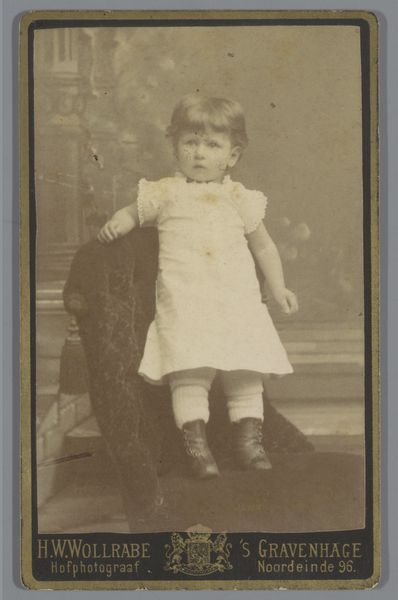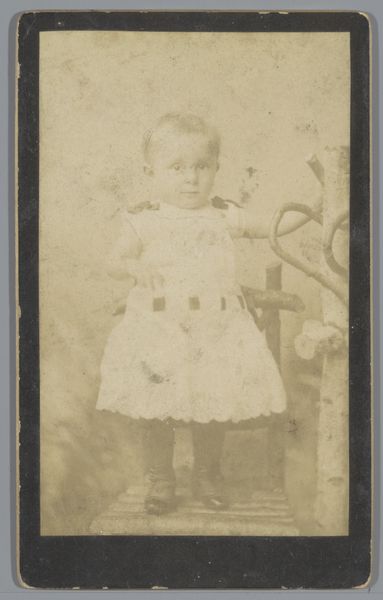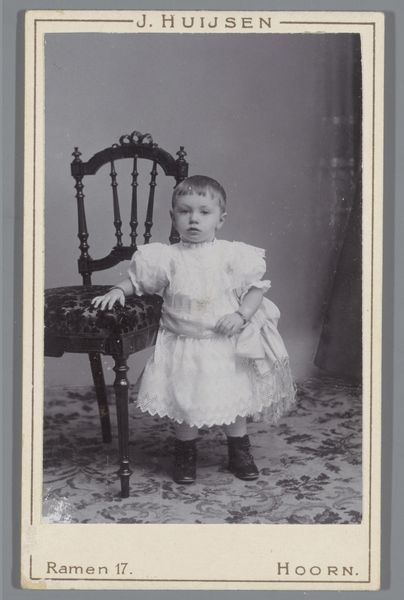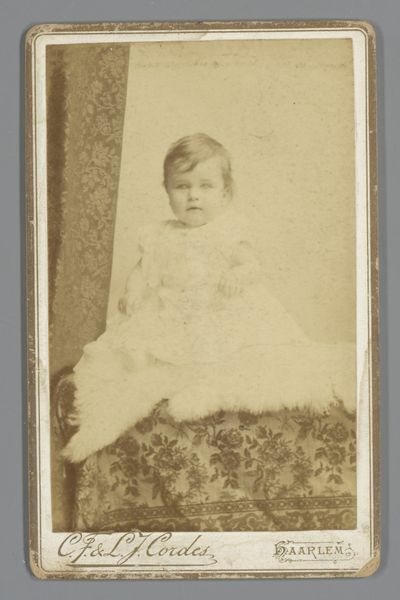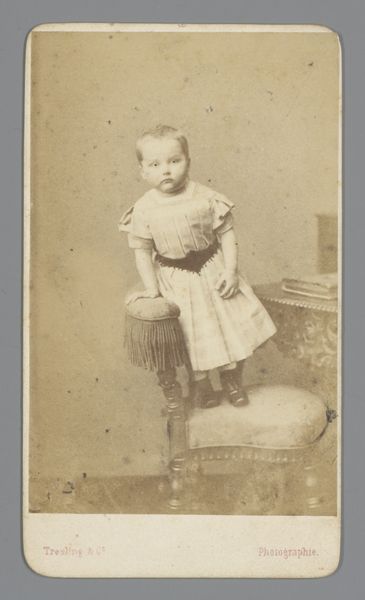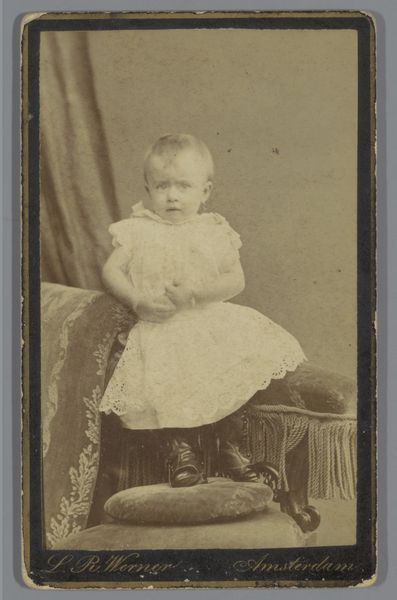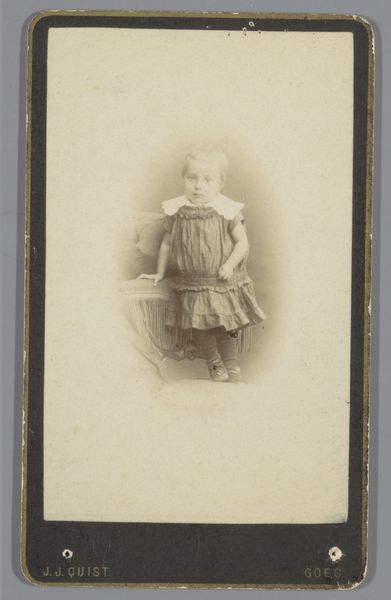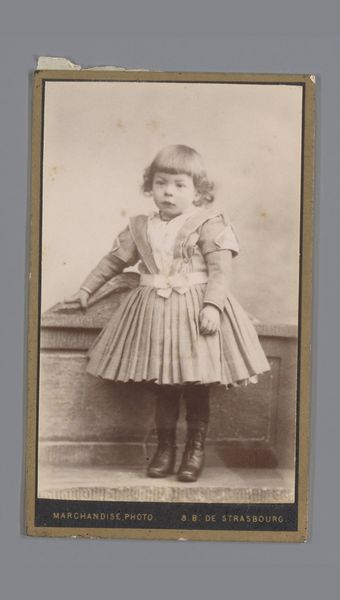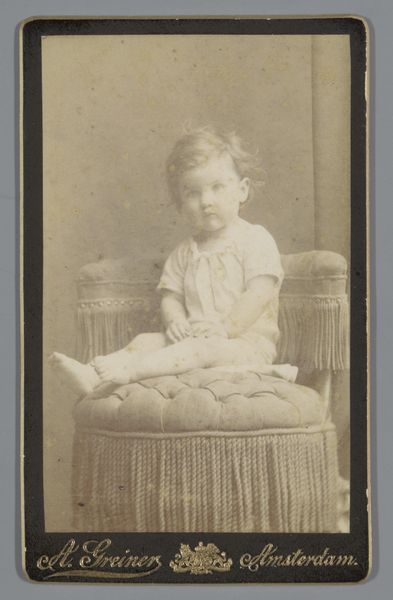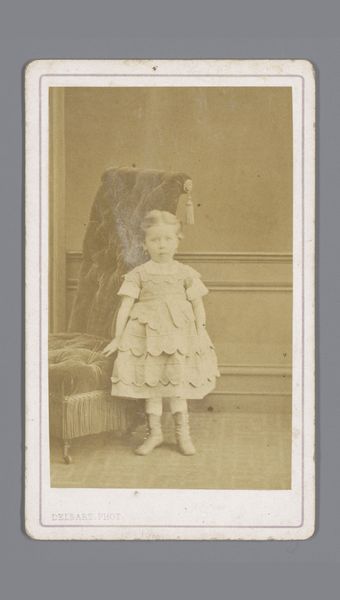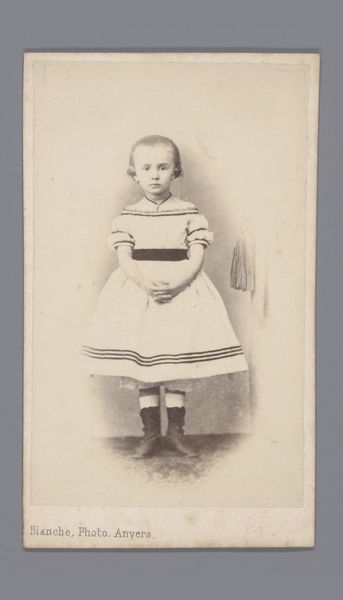
photography, gelatin-silver-print
#
portrait
#
photography
#
historical fashion
#
child
#
gelatin-silver-print
#
19th century
Dimensions: height 103 mm, width 64 mm
Copyright: Rijks Museum: Open Domain
Curator: Let's examine this gelatin silver print, "Portret van een onbekend kind," taken sometime between 1878 and 1886 by Louis Robert Werner. Editor: This portrait has a very still and formal feel to it, which I guess is typical for photography of this era. What really stands out to me is the child's lace dress; it looks quite delicate. How can we approach this photograph beyond its immediate aesthetic qualities? Curator: The photograph's materiality offers many layers to unpack. Gelatin silver prints were a widely accessible medium at the time. Reflect on the means of production. Think about how photography democratized portraiture. Once exclusive to the wealthy, this medium allowed a broader population to access personal representation. Editor: That's fascinating! So, it's not just about the dress, but also the very technology that made capturing it so widely available. Is that little prop also relevant, in your opinion? Curator: Exactly! Look at the prop. It imitates an architectural element, almost a small pillar, constructed probably from plaster, staging, studio equipment. This fabricated context reveals a manufactured sense of societal status that the patron - likely the child's parents - wished to convey. They sought respectability through the accoutrements of affluence replicated with less costly matter. Editor: That makes me think about how the labor involved is also part of the story - the photographer setting up the shot, the studio assistants managing the light and props… it's more than just a click of a button. Curator: Precisely! Think about how such formal portraits might have become aspirational objects circulating in broader society and influencing consumption habits. The social mobility represented via the subject's and her parent's consumption choices, replicated en masse by Werner in Amsterdam, reflects more than simply one "Portret van een onbekend kind". Editor: This has completely changed how I see this portrait. It is a piece about technology and production, consumerism, not just a historical artifact. Curator: Agreed! Focusing on its material context gives it new vibrancy and greater connection to the social structures in which it originated and circulated.
Comments
No comments
Be the first to comment and join the conversation on the ultimate creative platform.

